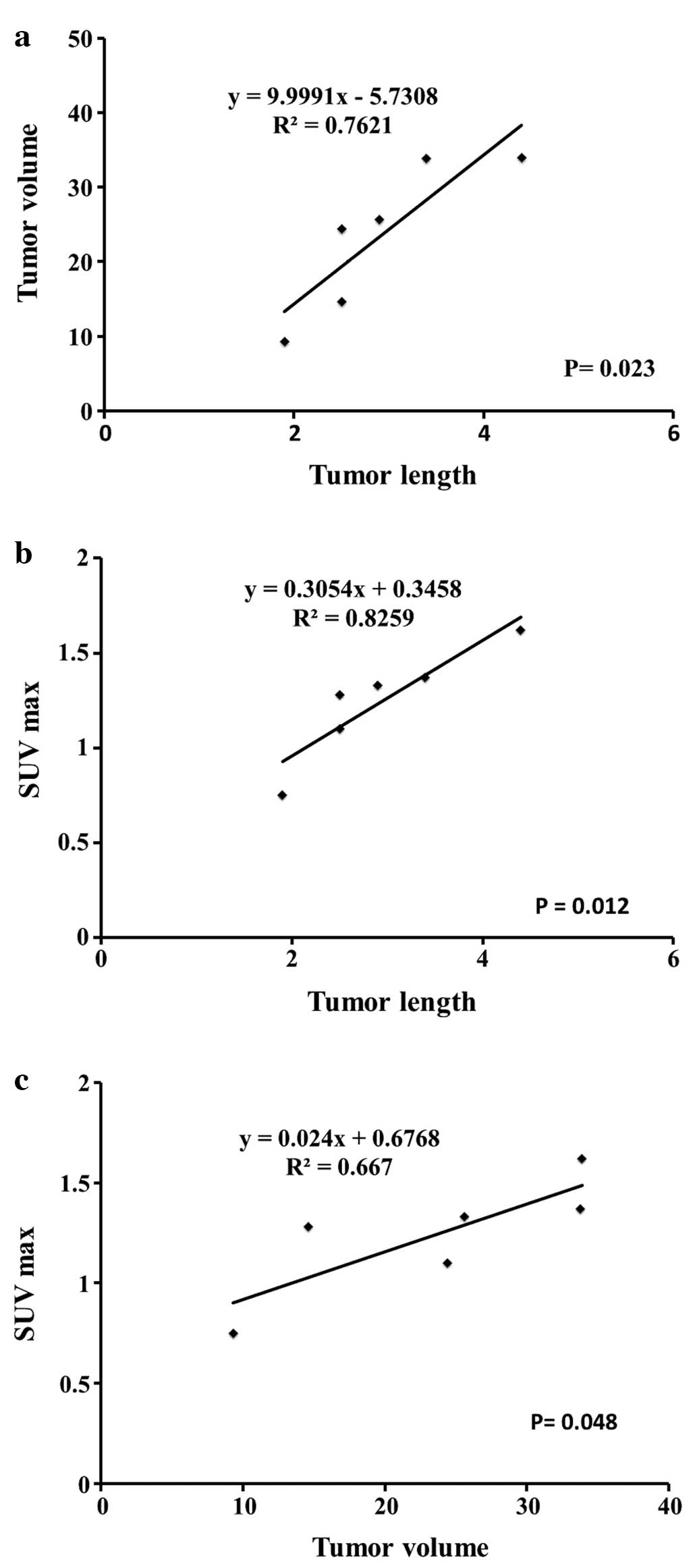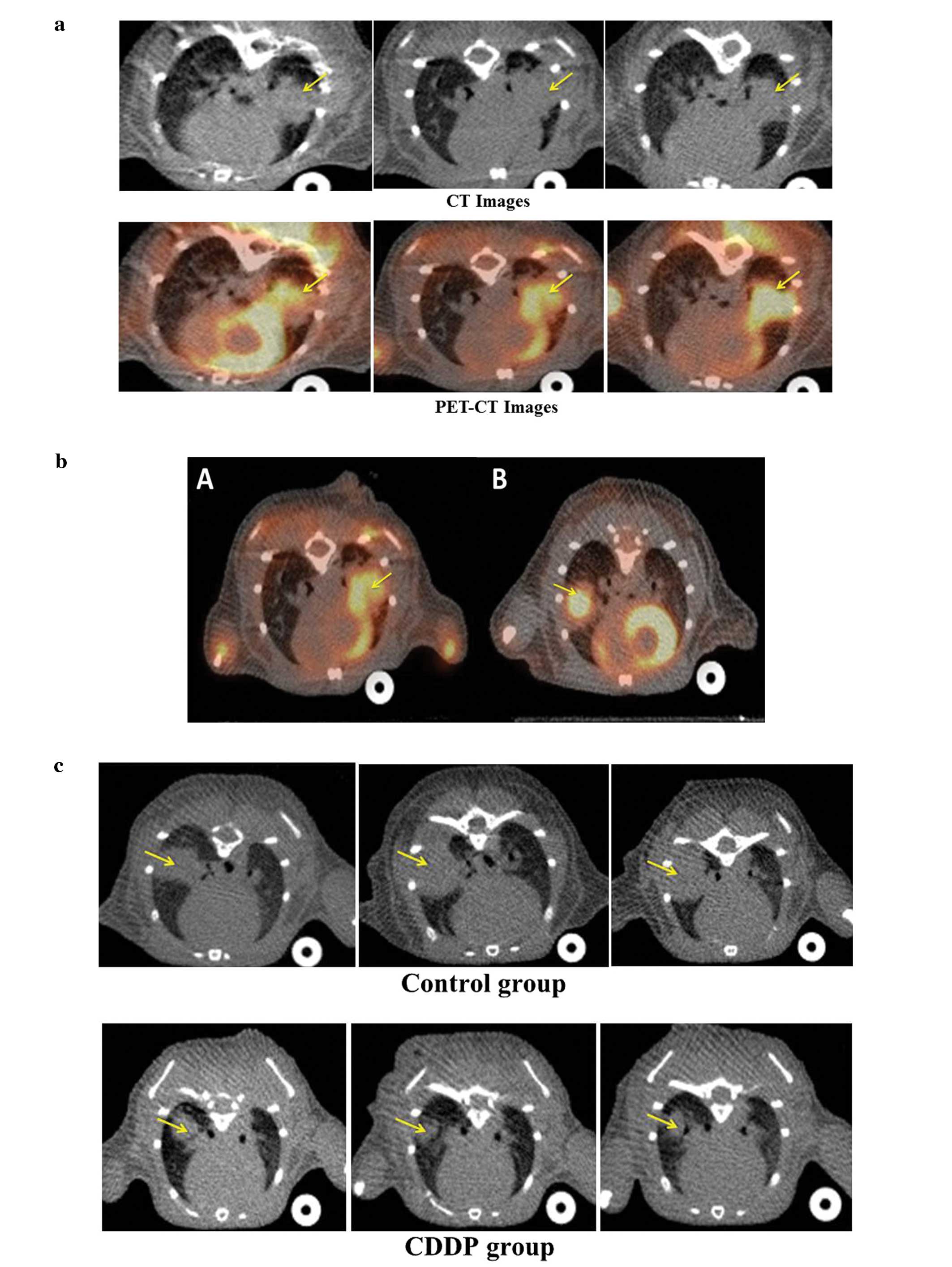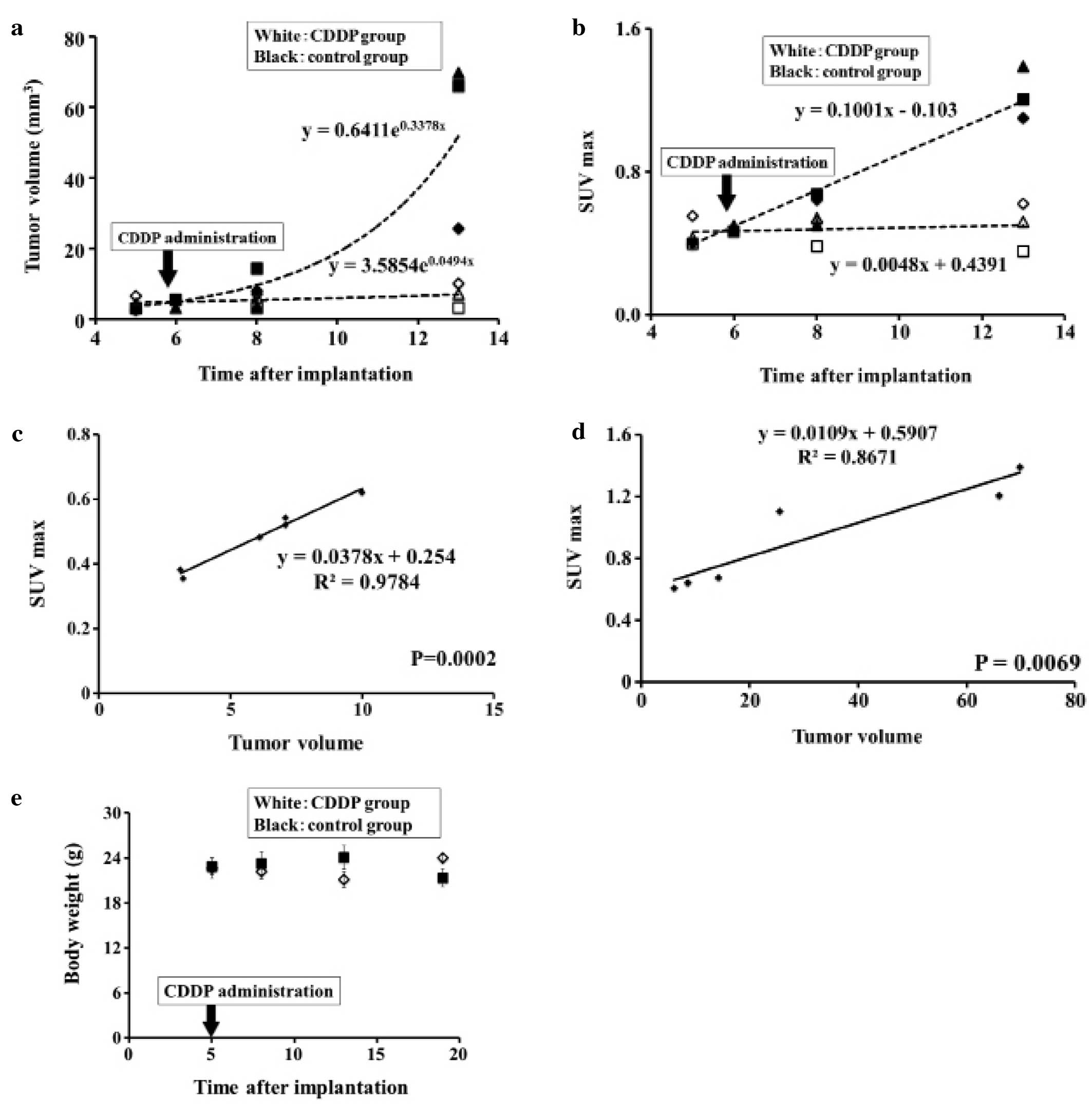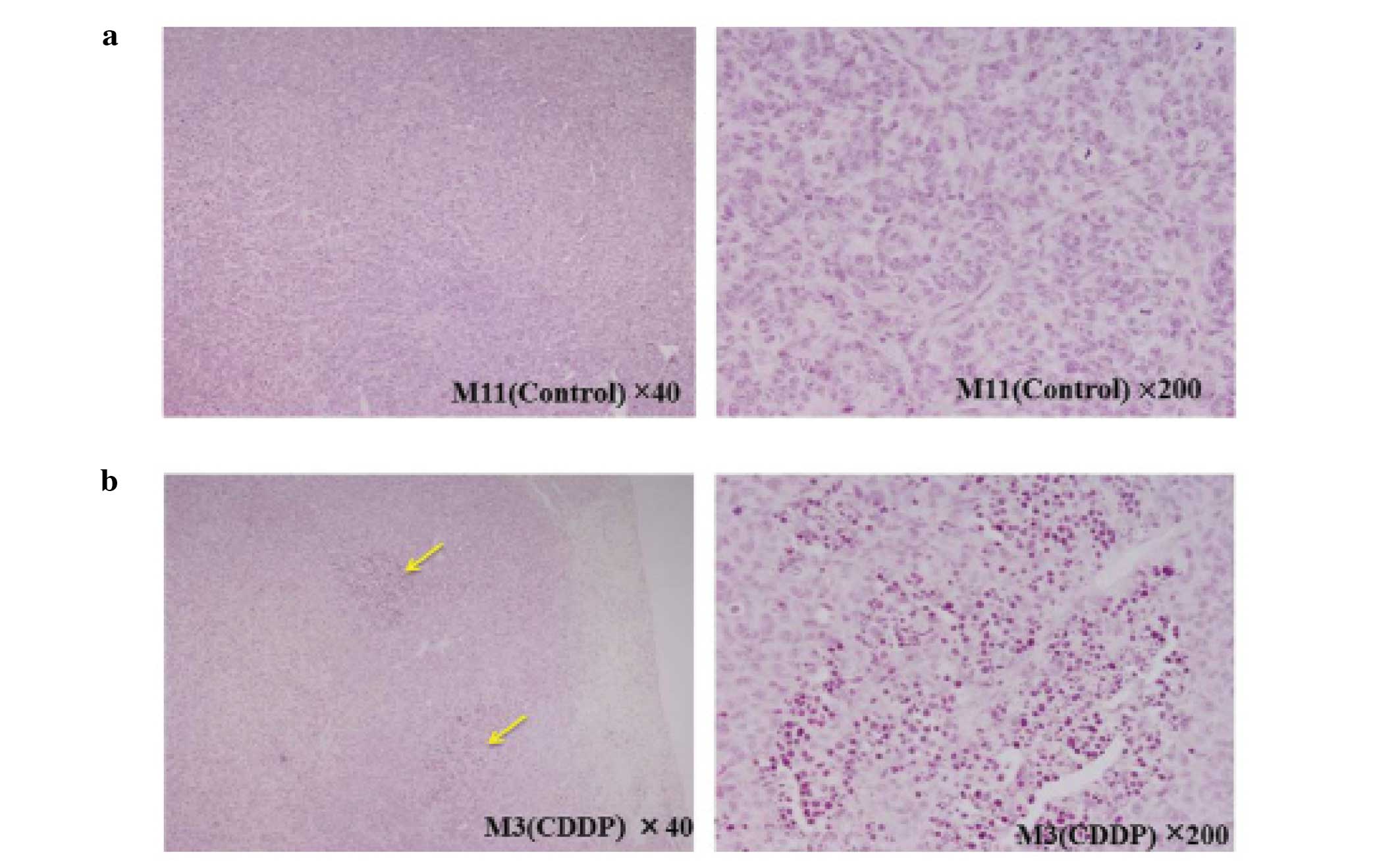|
1
|
Fujino H, Kondo K, Ishikura H, et al:
Matrix metalloproteinase inhibitor MMI-166 inhibits lymphogenous
metastasis in an orthotopically implanted model of lung cancer. Mol
Cancer Ther. 4:1409–1416. 2005. View Article : Google Scholar : PubMed/NCBI
|
|
2
|
Oliver TG, Mercer KL, Sayles LC, et al:
Chronic cisplatin treatment promotes enhanced damage repair and
tumor progression in a mouse model of lung cancer. Genes Dev.
24:837–852. 2010. View Article : Google Scholar : PubMed/NCBI
|
|
3
|
Kelland L: The resurgence of
platinum-based cancer chemotherapy. Nat Rev Cancer. 7:573–584.
2007. View
Article : Google Scholar : PubMed/NCBI
|
|
4
|
Francia G, Cruz-Munoz W, Man S, et al:
Mouse models of advanced spontaneous metastasis for experimental
therapeutics. Nat Rev Cancer. 11:135–141. 2011. View Article : Google Scholar : PubMed/NCBI
|
|
5
|
Bibby MC: Orthotopic models of cancer for
preclinical drug evaluation: advantages and disadvantages. Eur J
Cancer. 40:852–857. 2004. View Article : Google Scholar : PubMed/NCBI
|
|
6
|
Miyoshi T, Kondo K, Ishikura H, et al:
SCID mouse lymphogenous metastatic model of human lung cancer
constructed using orthotopic inoculation of cancer cells.
Anticancer Res. 20:161–163. 2000.PubMed/NCBI
|
|
7
|
Ishikura H, Kondo K, Miyoshi T, et al:
Artificial lymphogenous metastatic model using orthotopic
implantation of human lung cancer. Ann Thorac Surg. 69:1691–1695.
2000. View Article : Google Scholar : PubMed/NCBI
|
|
8
|
Ishikura H, Kondo K, Miyoshi T, et al:
Suppression of mediastinal metastasis by uracil-tegafur or
cis-diamminedichloroplatinum(II) using a lymphogenous
metastatic model in a human lung cancer cell line. Clin Cancer Res.
7:4202–4208. 2001.PubMed/NCBI
|
|
9
|
Fujino H, Kondo K, Miyoshi T, et al:
Establishment of patient-like SCID mouse model by orthotopically
implanting primary cultured cells from surgically-resected lung
cancer tissues. Oncol Rep. 10:1709–1715. 2003.PubMed/NCBI
|
|
10
|
Ishikura H, Kondo K, Miyoshi T, et al:
Green fluorescent protein expression and visualization of
mediastinal lymph node metastasis of human lung cancer cell line
using orthotopic implantation. Anticancer Res. 24:719–723.
2004.
|
|
11
|
Kondo K, Fujino H, Miyoshi T, et al:
Orthotopically implanted SCID mouse model of human lung cancer
suitable for investigating metastatic potential and anticancer drug
effects. Oncol Rep. 12:991–999. 2004.PubMed/NCBI
|
|
12
|
Zhang X and Wu J: Establishing of the
transplanted animal models for human lung cancer. JNMU. 23:1–5.
2009.
|
|
13
|
Myers R: The biological application of
small animal PET imaging. Nucl Med Biol. 28:585–593. 2001.
View Article : Google Scholar : PubMed/NCBI
|
|
14
|
Chatziioannou AF: Molecular imaging of
small animals with dedicated PET tomographs. Eur J Nucl Med Mol
Imaging. 29:98–114. 2002. View Article : Google Scholar : PubMed/NCBI
|
|
15
|
Wahl RL, Jacene H, Kasamon Y, et al: From
RECIST to PERCIST: evolving considerations for PET response
criteria in solid tumors. J Nucl Med. 50(Suppl 1): 122S–150S. 2009.
View Article : Google Scholar : PubMed/NCBI
|
|
16
|
Pauwels EK, Sturm EJ, Bombardieri E, et
al: Positron-emission tomography with
[18F]fluorodeoxyglucose. Part I Biochemical uptake
mechanism and its implication for clinical studies. J Cancer Res
Clin Oncol. 126:549–559. 2000.
|
|
17
|
Kostakoglu L, Hardoff R, Mirtcheva R and
Goldsmith SJ: PET-CT fusion imaging in differentiating physiologic
from pathologic FDG uptake. Radiographics. 24:1411–1431. 2004.
View Article : Google Scholar : PubMed/NCBI
|
|
18
|
Dose Schwarz J, Bader M, Jenicke L, et al:
Early prediction of response to chemotherapy in metastatic breast
cancer using sequential 18F-FDG PET. J Nucl Med.
46:1144–1150. 2005.PubMed/NCBI
|
|
19
|
von Falck C, Maecker B, Schirg E, et al:
Post transplant lymphoproliferative disease in pediatric solid
organ transplant patients: a possible role for
[18F]-FDG-PET(/CT) in initial staging and therapy
monitoring. Eur J Radiol. 63:427–435. 2007.PubMed/NCBI
|
|
20
|
Fueger BJ, Czernin J, Hildebrandt I, et
al: Impact of animal handling on the results of 18F-FDG
PET studies in mice. J Nucl Med. 47:999–1006. 2006.PubMed/NCBI
|
|
21
|
Jensen MM, Erichsen KD, Björkling F, et
al: Early detection of response to experimental chemotherapeutic
Top216 with [18F]FLT and [18F]FDG PET in
human ovary cancer xenografts in mice. PLoS One.
5:e129652010.PubMed/NCBI
|
|
22
|
Paget S: The distribution of secondary
growths in cancer of the breast. Lancet. 133:571–573. 1889.
View Article : Google Scholar
|
|
23
|
Beyer T, Townsend DW and Blodgett TM:
Dual-modality PET/CT tomography for clinical oncology. Q J Nucl
Med. 46:24–34. 2002.PubMed/NCBI
|
|
24
|
Ell PJ and von Schulthess GK: PET/CT: a
new road map. Eur J Nucl Med Mol Imaging. 29:719–720. 2002.
View Article : Google Scholar : PubMed/NCBI
|
|
25
|
Tatsumi M, Nakamoto Y, Traughber B, et al:
Initial experience in small animal tumor imaging with a clinical
positron emission tomography/computed tomography scanner using
2-[F-18]fluoro-2-deoxy-D-glucose. Cancer Res. 63:6252–6257.
2003.PubMed/NCBI
|
|
26
|
Kawada K, Murakami K, Sato T, et al:
Prospective study of positron emission tomography for evaluation of
the activity of lapatinib, a dual inhibitor of the ErbB1 and ErbB2
tyrosine kinases, in patients with advanced tumors. Jpn J Clin
Oncol. 37:44–48. 2007. View Article : Google Scholar
|
|
27
|
Kostakoglu L and Goldsmith SJ:
18F-FDG PET evaluation of the response to therapy for
lymphoma and for breast, lung, and colorectal carcinoma. J Nucl
Med. 44:224–239. 2003.
|
|
28
|
Barthel H, Cleij MC, Collingridge DR, et
al: 3′-Deoxy-3′-[18F]fluorothymidine as a new marker for
monitoring tumor response to antiproliferative therapy in vivo with
positron emission tomography. Cancer Res. 63:3791–3798. 2003.
|
|
29
|
Stimson L and La Thangue NB: Biomarkers
for predicting clinical responses to HDAC inhibitors. Cancer Lett.
280:177–183. 2009. View Article : Google Scholar : PubMed/NCBI
|














